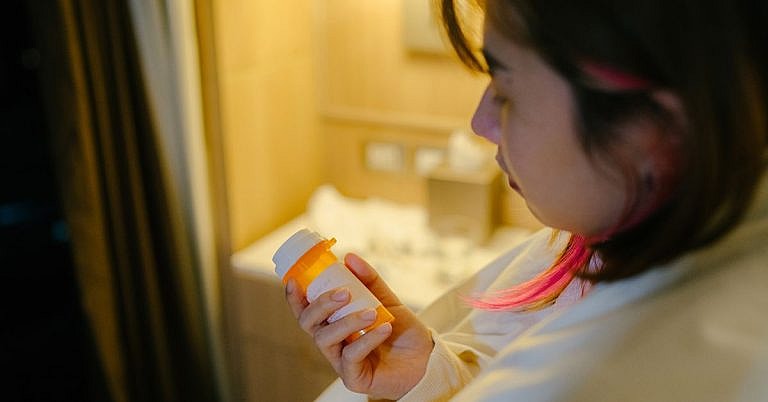Yellow C. diff Diarrhea: Symptoms, Treatment, and Prevention
C. diff infection can cause diarrhea. While it may lead your poop to change color, there are no specific colors that are definitive evidence of having C. diff.
According to the Centers for Disease Control and Prevention (CDC), Clostridioides difficile (C. diff) accounts for 15% to 25% of all cases of antibiotic-associated diarrhea. The bacterium lives in many people’s gut, but other healthy bacteria keep C. diff under control.
When you take antibiotics, there can be an overgrowth of C. diff. This can cause symptoms like severe diarrhea. While you might notice a change in stool color like yellow poop, there’s no connection between stool color and the infection.
What does C. diff diarrhea look like?
C. diff diarrhea is typically watery in consistency. Stools might have a semiformed shape but are typically liquid, and there may be evidence of mucus or blood.
Diarrhea is also frequent with a C. diff infection. Someone who exceeds 3 or more loose stools over the course of 24 hours should receive testing for the infection.
Can C. diff cause yellow diarrhea?
There is no specific stool color associated with C. difficile infection. Even a healthcare professional will not be able to identify C. diff from the color of stool. There is also no mention of stool color in the clinical practice guidelines for C. diff infection.
Researchers conducting a small 2019 study hypothesized green stool might indicate a C. diff infection because green stool was more prevalent in the control group. The researchers examined 84 stool samples, 4 of which were positive for C. diff.
Yellow stool may be a sign of other health conditions. Steatorrhea is an increase in stool fat content, which leads to pale-colored stools. Gallstones can also cause a number of digestive symptoms, including light-colored stools.
How long does C. diff diarrhea last?
The CDC reports that in about 20% of people, diarrhea goes away within 2 to 3 days after stopping the antibiotic that caused the infection. However, it’s important to get a definitive diagnosis of C. diff and follow a doctor’s recommendations before stopping any course of antibiotics.
C. diff diarrhea can begin soon after you start a course of antibiotics. The timeline is typically 5 to 10 days after starting the medication, but it can come on as soon as the first day of the antibiotic course and as long as 2 months later.
C. diff diarrhea can go away with treatment. However, it’s important to treat a C. diff infection because serious complications such as dehydration and bowel damage can develop.
Other symptoms of C. diff
Diarrhea is the primary symptom of C. diff, but there are many other common signs of the condition. You might have digestive symptoms, signs of dehydration, or other symptoms such as:
- abdominal pain
- nausea
- vomiting
- dry mouth
- less urination
- headaches
- fever
- appetite loss
- weight loss
In cases of severe infection, the intestinal lining might be inflamed (pseudomembranous colitis), or the colon might be dilated (toxic megacolon).
If a doctor suspects you have C. diff diarrhea, they can confirm the diagnosis by testing a stool sample. While many people have C. diff bacteria, there’s no need for treatment if a person has no symptoms. Treatment is typically recommended if you have symptoms and test positive for C. diff.
Treatment options for C. diff
If you have a diagnosis of C. diff diarrhea, a doctor might recommend treatment at home. If you are already in the hospital, you might be placed in isolation to prevent the transmission of the infection.
C. diff infection treatment involves taking antibiotics. For a nonsevere C. diff infection, a doctor might suggest taking an oral course of antibiotics at home. There are 2 main options:
- fidaxomicin: 200 mg every 12 hours for 10 days
- vancomycin: 125 mg every 4 hours for 10 days
For a severe C. diff infection, a higher dose of vancomycin may be given either orally or through a nasogastric tube.
If the C. diff infection comes back after treatment, another course of antibiotics may be given. In severe cases, fecal transplantation or surgery, such as colectomy, might be recommended.
How can C. diff be prevented?
If someone in your home has an infection, you can help prevent the transmission of C. diff by regularly cleaning and disinfecting surfaces.
You can also take the following steps:
- Wash hands regularly with soap and water, especially after using the bathroom and before eating.
- Clean surfaces like the toilet, handle, lightswitch, and doorknob with bleach after each use.
- Use only your own towels, and do not let others use yours.
- Wash clothes and sheets at the highest possible temperature.
- Avoid visiting others in the hospital if you feel unwell.
The American College of Gastroenterology (ACG) recommends against taking probiotics to prevent C. diff infection. According to the ACG guidelines, there is no evidence that probiotics actually stop C. difficile infection, and some evidence indicates probiotics might be harmful for some people.
When to speak with a doctor
If you have persistent diarrhea, you might want to speak with a doctor. Diarrhea can be a sign of many health conditions, including C. diff infection. You should speak with a doctor in particular if you have diarrhea and:
- you are on or have just finished a course of antibiotics
- you have blood in your stool
- you have abdominal pain, fever, or fast heart rate
- you have signs of dehydration
Frequently Asked Questions
What color is Clostridium difficile diarrhea?
Clostridium difficile diarrhea does not have a specific color, but it may sometimes have a green tinge.
Can a mild case of C. diff go away on its own?
A mild case of C. diff can go away on its own once you stop the antibiotics causing the infection. If it does not or your symptoms worsen, it is important to speak with a doctor.
How long does C. diff diarrhea last?
C. diff diarrhea typically lasts 2 to 3 days after stopping the antibiotic that caused the infection.
What is Yellow C. diff Diarrhea?
Answer: Yellow C. diff diarrhea is a condition caused by the bacterium Clostridioides difficile (C. diff). It typically occurs following antibiotic use, which disrupts the normal balance of gut bacteria and enables C. diff to proliferate. This can result in inflammation of the colon and subsequent diarrhea.
What are the main symptoms of Yellow C. diff Diarrhea?
Answer: Symptoms of Yellow C. diff diarrhea typically include:
- Watery diarrhea that occurs multiple times a day
- Abdominal cramping and pain
- Fever
- Nausea
- Loss of appetite
- Fatigue
In some cases, more severe symptoms may develop, such as dehydration or serious colon inflammation.
What causes Yellow C. diff Diarrhea?
Answer: Yellow C. diff diarrhea is primarily caused by an overgrowth of C. diff bacteria in the colon. This overgrowth often occurs after antibiotic treatment, which can kill off good bacteria in the gut and disrupt its balance. The toxin produced by C. diff bacteria leads to inflammation and diarrhea.
How is Yellow C. diff Diarrhea diagnosed?
Answer: Diagnosis of Yellow C. diff diarrhea typically involves a combination of reviewing medical history, especially recent antibiotic use, and conducting laboratory tests. Stool tests are used to identify toxins produced by C. diff.
What are the treatment options for Yellow C. diff Diarrhea?
**Answer:** Treatment options for Yellow C. diff diarrhea focus on eliminating the infection and restoring healthy gut flora. This may involve:
- Discontinuing the current antibiotic treatment, if possible
- Prescribing antibiotics specifically effective against C. diff, such as metronidazole or vancomycin
- In severe cases, fecal microbiota transplantation might be considered to restore healthy gut bacteria.
How can Yellow C. diff Diarrhea be prevented?
Answer: Preventative strategies for Yellow C. diff diarrhea include:
- Using antibiotics only when necessary and as directed by a healthcare provider
- Practicing good hand hygiene with soap and water
- Thorough cleaning of healthcare environments and surfaces with appropriate disinfectants
- For those at risk, probiotics may be recommended to help maintain a healthy balance of gut bacteria.
Can Yellow C. diff Diarrhea recur?
Answer: Yes, Yellow C. diff diarrhea can recur in approximately 20% of patients who have had it. Recurrence may be due to the original infection not being fully cleared or reinfection. Follow-up care and preventive measures are critical to reducing the risk of recurrence.
When should someone see a doctor if they suspect Yellow C. diff Diarrhea?
Answer: It is important to see a doctor if you experience persistent diarrhea, especially if it occurs after antibiotic use, or if you have symptoms like severe abdominal pain, high fever, or signs of dehydration. Early diagnosis and treatment are vital to managing C. diff effectively and preventing complications.
Takeaway
C. diff diarrhea often occurs after a course of antibiotics changes the healthy balance of bacteria in the gut. Your stools might become watery and contain mucus or blood. While some might notice a change in stool color, there’s no connection between C. diff infection and poop color.




Thank you for sharing this informative post! Understanding the symptoms and treatment options for yellow C. diff diarrhea is crucial for early diagnosis and effective management. The prevention tips are particularly helpful in raising awareness about hygiene practices that can reduce the risk of infection. Looking forward to more content like this that helps demystify complex health issues.